Spending your hard earned cash on an artwork however it’s created, is a real financial investment, but what makes it priceless is your emotional investment. The fact that you have found it, fallen in love with it and must have it in your space is a value that only you can determine. So you will want to take the best care of it you can. To enjoy it long into the future here are a few simple tips on caring for and handling your framed artwork.
TAKE GREAT CARE
When collecting and transporting artwork, hold the frame firmly on both sides. Never pick up a picture by the top of the frame, this is likely to flex unseating the glass from behind the lip of the frame, the weight of the entire package could even break the top rail jeopardising the artwork. If necessary, “phone a friend” and carry the work upright between the two of you. When storing pictures, make sure they’re stacked vertically, the right way up avoiding adverse cross stress on the hinging securing the artwork in the mount package. Stand them glass-to-glass, back-to-back to avoid fixings damaging the frames.

Image: Kevin Vogel: Fine Art Estates

Image: Broadway Gallery: Letchworth Garden City
Always pick up and carry your artwork with two hands. Hold firmly by the sides. Large, heavy work should be carried between two people, each grasping and supporting the side rails of the framed artwork with both hands.
DISPLAY AT EYE-LEVEL
In the ideal world artwork is best viewed at eye-level. So if you’re a tall person and your partner is short, there will be a compromise, but anywhere between 1525-1675mm should be fine for you both. Another consideration might also be how you use the space, for example would you generally be viewing the work from a relaxed seated position. Groups of pictures needn’t be hung in a regimented fashion, but they should follow some kind of overall design. When hanging a group of different sized pictures consider aligning the top or the bottom edges; but even a “random” display will benefit from a little planning. Lay them out on the floor and move them around until you’re happy with the arrangement. The centre of the arrangement should be roughly at eye-level.

Image: Matheus Viana: Pexels
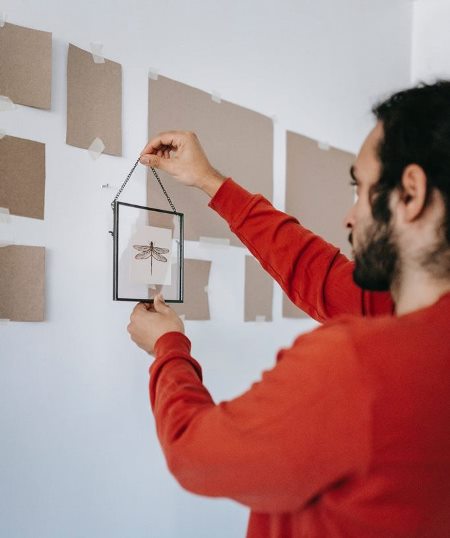
Image: Blue Bird: Pexels
For the best experience of your art, display it at roughly eye level. It’s no coincidence that galleries have a large amount of wall space above smaller pieces of work. There is no strict rule about how to display a collection, but plan it before committing to picture hooks in the wall.
HANG SECURELY
Ensuring your picture is hung securely is a must. It’s better to be safe not sorry. Make sure the fixing you use suits the type of wall on which you intend displaying your work. Different wall constructions need different fixings and support different weights. Light weight wall construction such as stud walling can be tricky. For larger pieces of work added security is provided by using more than one wall fixing, if one should fail the second should save disaster. Check that the cord/wire or hanger used is capable of supporting the weight of your picture. If safety is a concern say in a child’s room or public spaces consider shatterproof glazing and security fixings.
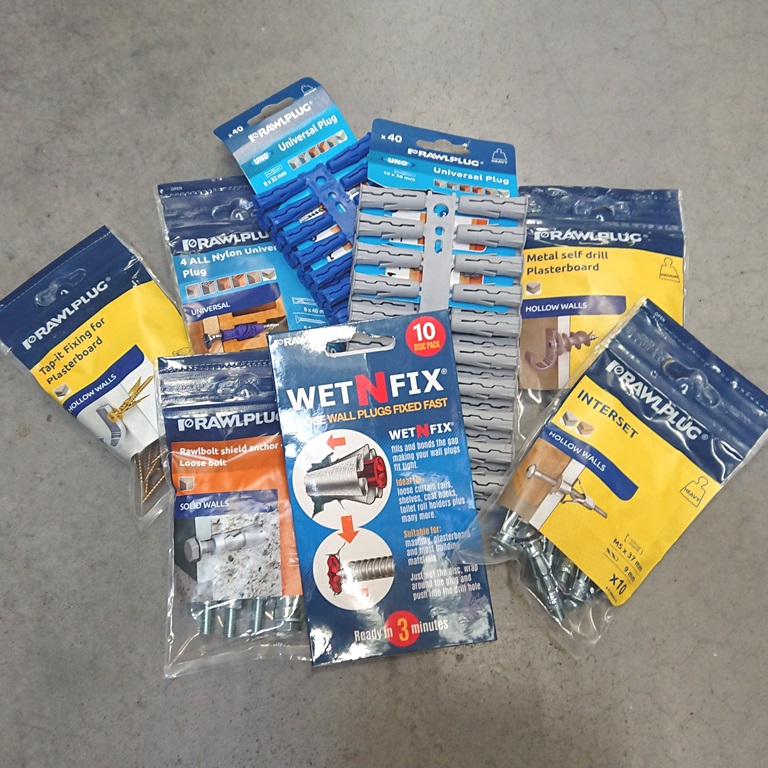
Choose the correct wall fixing for the type of wall construction you will be hanging your artwork on to.
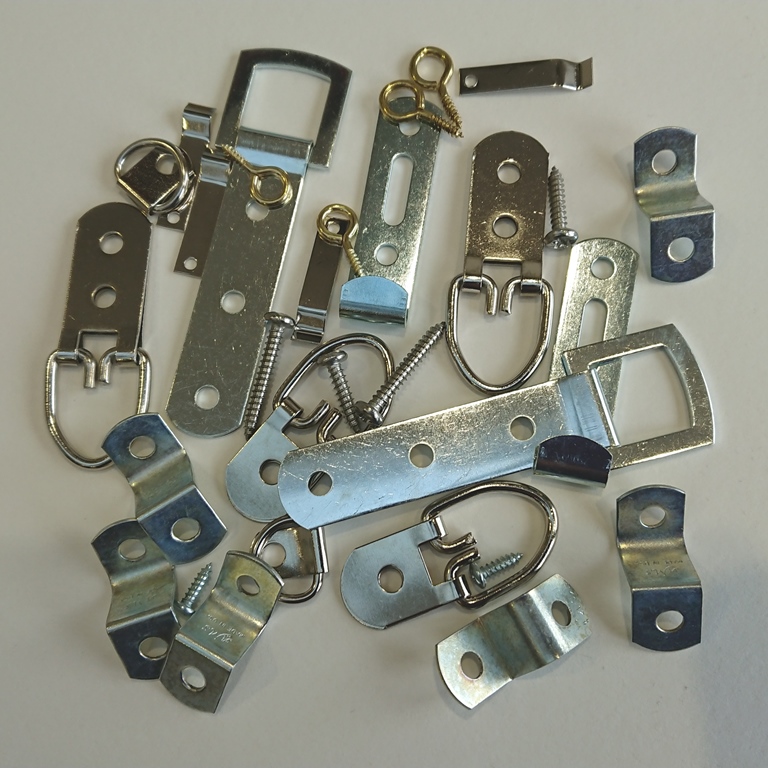
It’s important to use the right style and weight of hardware for the size and weight of the artwork.
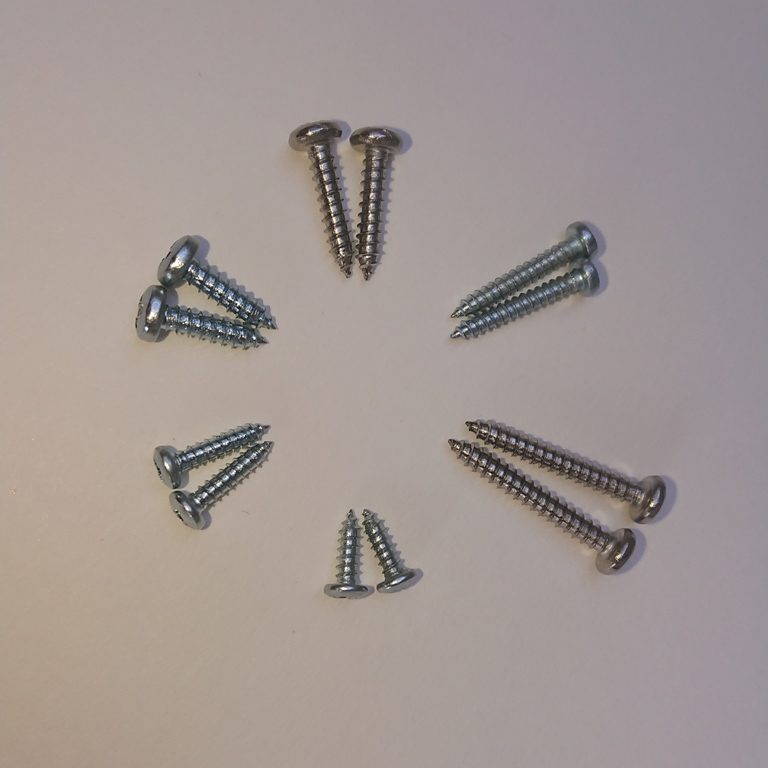
A good picture framer will use the right size and quantity of screws to secure the hanging fixings to the back of the frame.
OUT OF DIRECT SUNLIGHT
Try to avoid hanging pictures directly opposite windows and anywhere where strong sunlight falls. Be aware of the light at different times of the day and different times of the year. UV in light bounces from surface to surface and even in a north facing room will fade colours and damage paper and textiles. Specialist glazing can slow this down, but will not prevent it completely. There are countless glazing options so talk to your picture framer for advice, or see my blog for more information. You might even consider adding UV protection directly to your windows, contact Next Doors Ltd for advice.
ENVIRONMENT
Choose carefully where you hang your artwork, ideally in a stable environment with good air circulation. Pictures shouldn’t be hung above radiators or close to strong heat source, rapid changes in temperature cause paper and wood to warp, dry out, and adhesives to fail. Equally, avoid hanging framed work in humid conditions like kitchens and bathrooms. If you live in a period property or your house is of solid wall construction, be mindful of the condition of external walls, check they’re not wet. Damp causes paper to ripple which if it touches the glass can be hard to remove. Damp encourages mildew which will show as ugly, furry deposits and brown stains.
A QUICK CHECK
Regular inspection and gentle cleaning will prolong the life of your framed artwork. However avoid using water or liquid detergents, dust frames with a soft cloth or a very soft bristled brush and don’t forget to dust the back of the framing package. Don’t use cleaning fluids or water on the varnished surface of paintings, dust carefully. If fluids have to be used on glass, spray into a soft cloth first, not directly on to the glass, and don’t let them touch the frame. Never use ammonia based cleaners on any technical glazing.
Annual “health” checks and simple maintenance gives you the best chance of enjoying your artwork well into the future, so check:
- The mitred corners of the frame to ensure the joints are still strong and securely holding the package together.
- The tape sealing the package, it should be unbroken and still adhered.
- The hanging fixings in the back of the frame to make sure they’re undamaged haven’t rusted and are still securely attached to the frame.
- The hanging fixings in the wall to make sure they’re undamaged, haven’t rusted and are still securely supporting the artwork on the wall.
- The hanging cord/wire to make sure there is no fraying or broken strands weakening its integrity.
- The glass for cracks or chips that will damage the artwork and allow the ingress of environmental nasties and insects.
If there is evidence of damage seek advice from your picture framer.

The broken top left corner has weakened the frame and leaves the artwork vulnerable to ingress of dust, moisture and insects.

Paper based artwork is a food source for silverfish which have accessed the framing package via the broken frame.
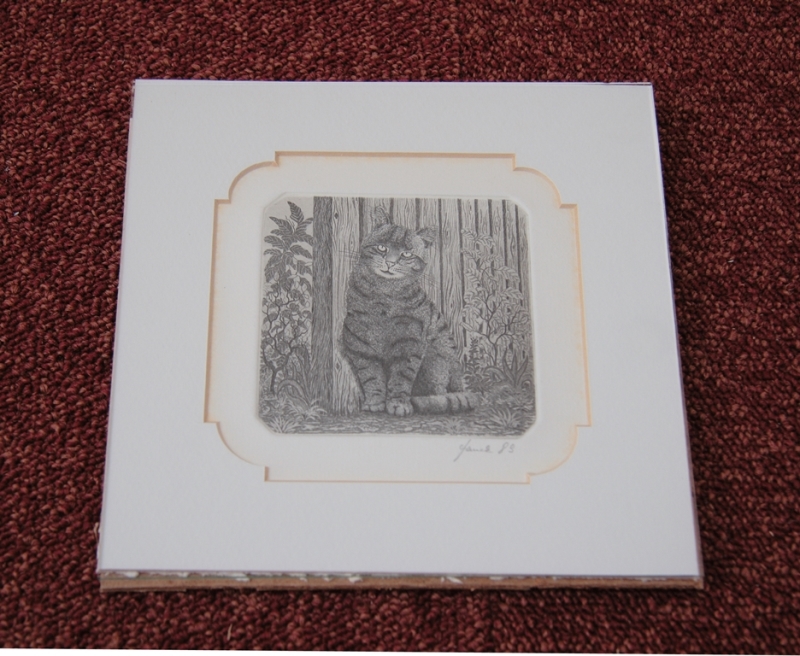
The bevel of a mount turning brown is a sign that a mount has become acidic and is likely to permanently damage artwork.

Evidence that acids have leached from an old poor quality mount. The shape of the mount is clearly visible in the discolouration.
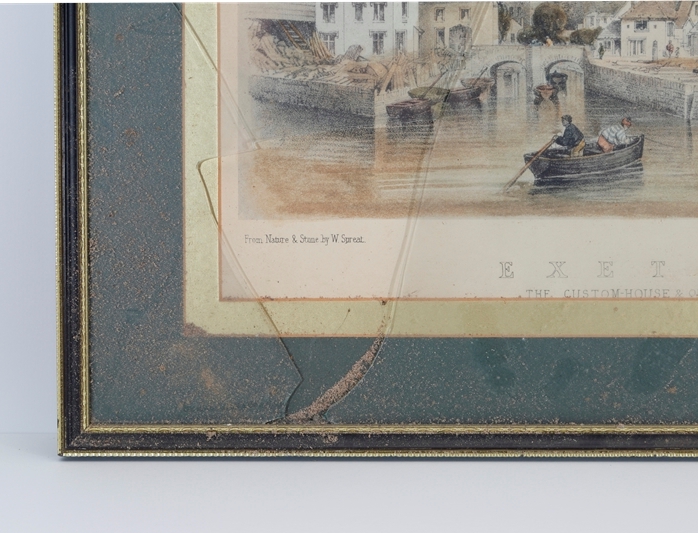
Broken glazing and an excessive build up of dirt leaves the artwork vulnerable to terrible environmental and insect damage.
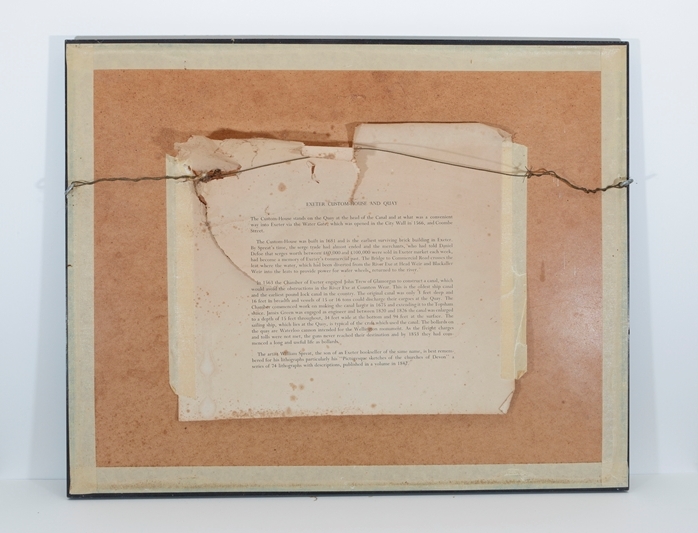
Weakened wire and questionable sealing of the framing package needs to be quickly resolved.
If you’re thinking of having a treasured image framed and don’t know where to start, we’re here to help. If reading this blog has raised other questions in your mind call Bev for a chat to put your mind at rest. If you would prefer her to conduct a “health” check on your artwork for you contact her on 01303 268618 or 07833 350815.


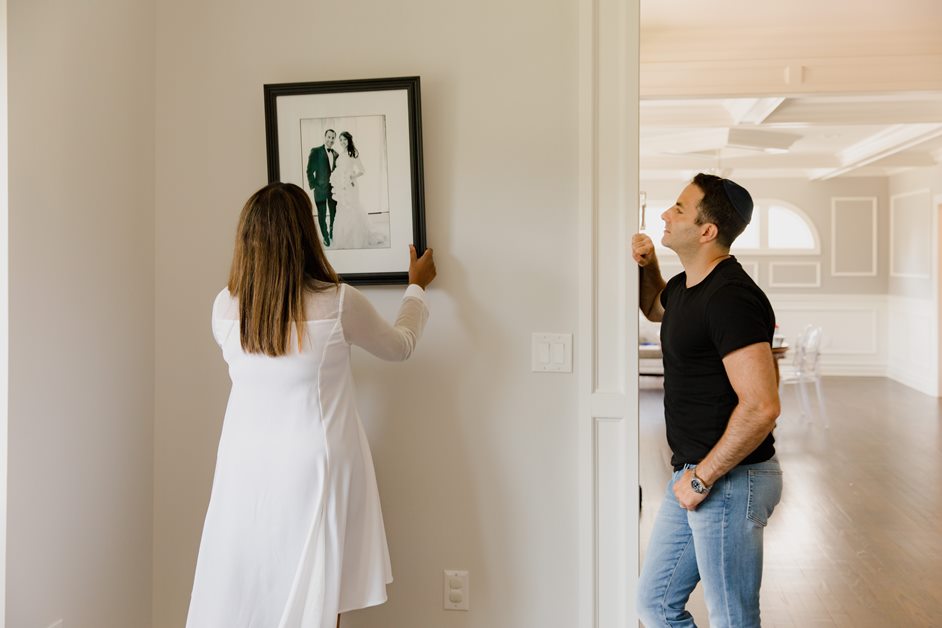
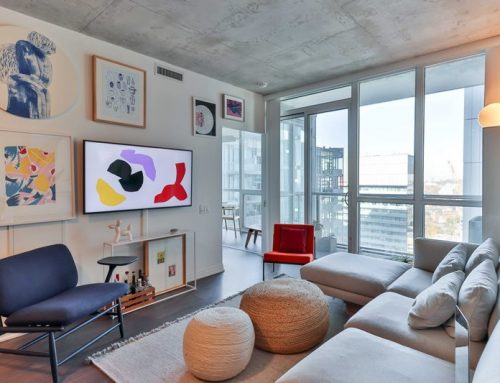



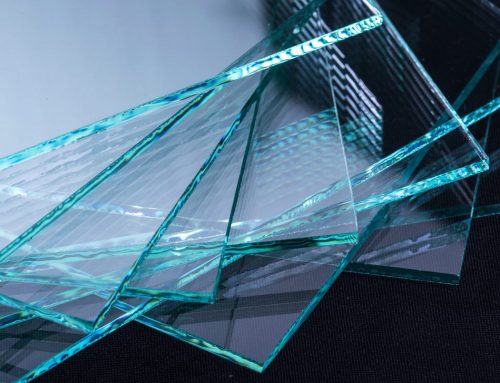
Leave A Comment